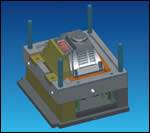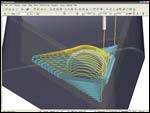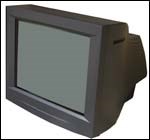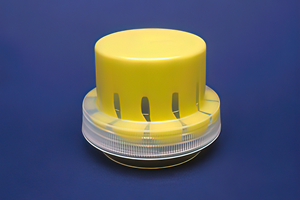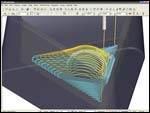CAD/CAM Does Double Duty
CAD/CAM software makes molds faster and helps trim parts.
Tough-to-produce plastic parts used to be something extremely difficult for programmer David Eno at Auburn Vacuum Forming Co. (Auburn, NY); however, he found a way to make them more easily, while giving them a comfort zone for any part that comes through their doors.
Auburn is a manufacturer of vacuum or pressure-formed plastic parts for mid-size and larger companies serving the general industrial, medical and transportation markets. These custom-made parts normally involve secondary CNC machining and further value-added assembly work. Their 40-person staff is supported in these efforts with in-house services including CAD, pattern, mold and fixture construction.
Auburn’s pattern shop has the capability to produce tools using traditional pattern making equipment coupled with CAD/CAM. Fixtures and CNC programs are developed in-house to ensure tight control over the manufacturing process. Three and five-axis CNC machines are used extensively for consistent and productive part processing. They are able to import and export files, to rapidly develop CNC toolpaths, and to assist customers with part design and development.
The Challenge
A problem the company had to solve was how to trim small or large parts from thermoformed-plastic sheets quickly and accurately, and produce molded parts productively. Molds and plastic formed parts could be as small as two inches by three inches or up to 10 feet in length. An average molded thermoformed part is five-feet square using up to one-half-inch-thick plastic sheet.
The Solution
Auburn processes production orders from those that are small (less than 50 pieces) to those in the thousands of parts, and also designs and produces prototypes. To be able to trim out these large thermoformed parts, the company has been using Mastercam CAD/CAM software from CNC Software, Inc. (Tolland, CT) since 1993. Eno has been using Mastercam since 1987. Today they are using Version 9.1 to generate toolpaths and surfaces for their CNC trimming machines and metal cutting milling machines.
Eno remarks, “We’re using Mastercam to generate toolpaths for aluminum molds and to trim the parts that they produce. We have the ability to take our customers’ supplied geometry and import it into Mastercam. Features such as openings, holes, square holes and trimmed edges are all handled by the five-axis trimming station with code and toolpaths generated by Mastercam.”
Surfacing with Mastercam is “very easy,” remarks Eno. “You can easily control the router position, the wrist-arm position with a vector and lock it into position without generating a lot of unnecessary code. Mastercam is intuitive and very reliable. Once you generate a toolpath and you see it on the screen, you know that it’s an accurate representation of what your CNC machine is going to do when the CNC program is executed.”
Eno adds, “On aver-age, our programs take us about an hour to do, and at times less than 10 minutes. However, we couldn’t do it on the machine’s CNC controller. It would be very difficult to just about impossible to program our parts that way. Also with Mastercam, it allows us to do a job more than one way. It gives us a great comfort level with whatever part comes through the door to produce, because we know that Mastercam can handle it.”
Staying Competitive
Auburn has been chosen to evaluate the Mastercam solid modeling and machining software. Upgraded editions are furnished to them for evaluation prior to general release. Having access to the latest offerings gives the company a competitive edge in bringing plastic parts to the marketplace in the most efficient manner.
Related Content
How to Select a Mold Temperature Controller
White paper shares how cooling channel analysis, which collects maximum pressure drop, total flow rate and heat dissipation, eases the performance evaluation of mold temperature controllers.
Read MoreHow to Manage Wall Thickness Changes in Your Mold Design
To ensure even filling and cooling, consider wall section transitions, corners and fillets, ribs and bosses, lip and rim designs and CAE flow simulation software.
Read MoreHow to Analyze and Optimize Cutting Conditions to Reduce Cycle Time
Plastic injection mold design and manufacturing company puts NC program optimization software module to the test. The results were surprising.
Read MoreMold Design Review: The Complete Checklist
Gerardo (Jerry) Miranda III, former global tooling manager for Oakley sunglasses, reshares his complete mold design checklist, an essential part of the product time and cost-to-market process.
Read MoreRead Next
Moving Mold Design From 2-D to 3-D
Moving to 3-D mold design can provide a very effective way of improving competitiveness and helping companies win more business.
Read MoreHow to Exceed the Limits of Your Toolpaths
A moldmaker’s ability to reduce machining time is not limited by his machine tools or cutting tools, but rather by the toolpaths that drive them.
Read MoreHow CAD/CAM Is Making a Programmer’s Job Easier
Arming yourself with the appropriate information will help you select the right software to help your shop work smarter not harder.
Read More
